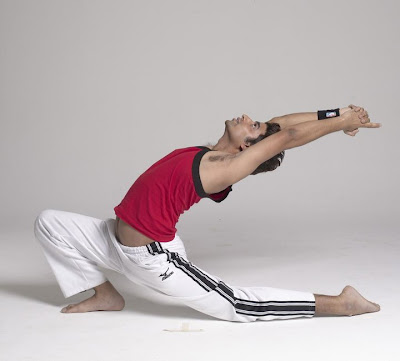Yoga is a great exercise for every type of person. Those who practice yoga can improve balance, strength, flexibility, and the mind/body connection. The practice of yoga is also welcoming for students at every level and every stage of life and holds benefits for expecting mothers as well. Mothers-to-be will find that yoga can maintain strength and functioning during pregnancy which can ease the difficulty of labor and postpartum recovery.
Conventional exercises during pregnancy, such as using the treadmill, abdominal strengthening exercises, or vigorous exercise classes can become uncomfortable or even dangerous as your belly grows and as your center of gravity shifts. However, when executed properly, yoga poses can conform to your growing belly and changing physiology perfectly.
Make Room For Baby
One of the most important tasks a pregnant woman faces is the need to create space within her for a baby to grow. Yoga can enhance flexibility which can allow a pregnant woman to gently stretch her body. This stretching of muscles and joints can increase available space within the pelvis and abdomen for the baby to grow, and may prevent tightness, maternal pain and fetal growth restriction. The "pigeon carrier" pose is a great yoga pose for pregnant women because it allows them to open up their hips and to stretch out their glutes and hamstrings. The pose counteracts tightness in the hips caused by the forward push on the pelvis in response to baby's increasing weight.
De-Stress
One hour of intense focus or meditative concentration can help any student of yoga to set aside the stresses and concerns of daily life. It's easy to imagine how these relaxation techniques can benefit a pregnancy. Yoga can help relax the mind and give you time to get away from the stress of being pregnant; many women find that pregnancy and the postpartum period is not the fairy tale it is portrayed to be in the movies. Effective yoga can help you shut off the uncomfortable emotional and physical stresses, at least temporarily, which can be very beneficial for maternal and fetal well-being.
The Power Of The Breath
Breathing and meditation training can be an ace up your sleeve during labor and delivery, especially if your goal is to have a drug-free or "natural" labor and delivery. During my own labor, I used breathing exercises and yoga movements along with tai chi as my main pain management tools during cervical dilation. The yoga movements helped open my hips and breathing served to alter my pain perception. I also used a labor ball, personal rituals, and a warm shower to help me through my labor. Though every woman is different, it is important to develop a "tool chest" of relaxation techniques ahead of your labor to help minimize pain at the time of delivery.
Getting Back Into Shape
A common concern of pregnant women is wondering if their abdominal muscles will ever be strong and look fit again. Unfortunately, it is nearly impossible for your abdominal muscles not to be altered during pregnancy because the muscle wall actually starts to separate down the midline to accommodate the growing baby. The good news is that yoga techniques can train and strengthen the deepest abdominal wall, the transversus abdominus (TA), which maintains strength through pregnancy and the recovery period. The TA is like a mini corset that pulls in the abdomen, while the top layer of abdominal muscles, the rectus abdominus, sometimes forms the visible "six pack" of the abdomen. Yoga and pilates strengthen the deepest layers of muscles upon which top layers can then be strengthened. The least useful exercise to reduce the "pooch" after pregnancy is sit-ups or crunches. These exercises actually make your belly look bigger by strengthening the top layer of muscles only, and do little to train the TA. It makes the most physiologic sense to strengthen the abdominal wall from deep layers to more superficial layers to most effectively to get back into pre-pregnancy shape.
Sleep Well
One of the biggest complaints of pregnant women is that they can't seem to find a comfortable sleeping position. Yoga addresses this complaint in many ways. Yoga teaches proper and comfortable positioning using the bolster and blanket as aides to the growing body. The very positions you learn while practicing can be re-created in your bed which helps promote utmost relaxation and sound sleep. Further, yoga teaches you poses that can help relax the areas in your body which keep you up at night. Last, yoga relaxes your mind through meditative techniques, effectively stopping images of strollers, cribs, and other baby accessories and allowing you to drift comfortably to sleep.
Stand Tall
You may have good posture now, but when you start to grow larger, particularly in the chest and abdomen, the extra weight pulls your center of gravity away from a neutral position. This shift can cause lordosis, an often painful condition of vertebral tilt that misaligns the spine. Yoga helps strengthen the weakened posture muscles of the back, and it stretches the tightened chest muscles. It helps keep the muscles of the body in balance.
Bond
When a woman practices yoga, she is always on a journey of exploration and of discovering her true self. Practicing yoga while pregnant is an especially gratifying experience; yoga can give a mother time to discover her deep, emotional bond with her baby even before he enters into the world. The connection felt with my baby, accentuated by every palpable kick and flip, made my practice of yoga during my pregnancy rewarding and unforgettable. I also imagined that my baby too was also practicing yoga in his floating watery world. Both of us connecting through the wonders of yoga, creating a special uniting bond.
For photos of mothers practicing yoga with their babies visit the following page:
http://www.facebook.com/album.php?aid=6838&id=100001016832315





